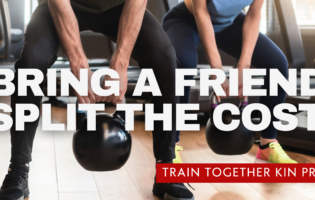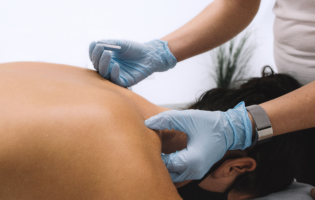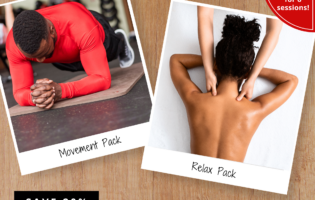Total Therapy Blog
Ski Fit Conditioning – Prepare your Body for the Mountains

 This article was contributed by our resident chiropractor Dr. McKay, Chiropractor DC, BHK, Sport Chiropractic Resident RCCSS(C), Certified ART® Provider, Graston Technique® Provider, CSEP-CEP, NSCA-CSCS. Janine has over 12 years of experience in sports conditioning working with many athletes from hockey, football, baseball, soccer, volleyball, rugby and figure skating.
This article was contributed by our resident chiropractor Dr. McKay, Chiropractor DC, BHK, Sport Chiropractic Resident RCCSS(C), Certified ART® Provider, Graston Technique® Provider, CSEP-CEP, NSCA-CSCS. Janine has over 12 years of experience in sports conditioning working with many athletes from hockey, football, baseball, soccer, volleyball, rugby and figure skating.
Develop a strong core, upper body and powerful legs to prepare you for the mountains. Skiing and snowboarding is a prime example of an ultra-dynamic movement. You are not only moving down hill at a very rapid pace, you’re maintaining balance and stability while facing strong lateral moves across the slopes. With these challenges occurring, you need to control your speed while changing direction while coordinating your movements.
Ski hill warriors also known as “weekend warriors” are at a higher risk for injury due to the lack of conditioning for the demands of the mountains. Your general fitness can have a marked affect on the enjoyment you get from your skiing or snowboarding. A proper Ski Fit conditioning program should be initiated at least 8-12 weeks prior to ski season. Here is a sample workout that lasts between 40-45 minutes. If you are compliant with your training days at three to four times a week you will boost your general fitness level and conditioning.
Begin with a 5-10 minute dynamic warm-up that includes a combination of exercises such as arm circles and swings, skipping, side shuffle steps, high knees, glut kickers, and crossovers. Perform these warm-up exercises slow and in a controlled manner to warm up the upper body, trunk, hip and thigh muscles. Progress to warm up sets for the exercises that you will be doing in your work out. The warm up sets are done to prepare your body for the lift or exercises chosen. These are done with no extra weight, only your body weight as you are trying to train the movement pattern first.
The Session
Weight training should generally have a rest day in between training days, depending on program split and intensity. The rest intervals between sets can change between works outs depending on what you are training for.
Lower body strength is best achieved with multi-jointed exercises such as wall sits, squats, dead lifts, lunges and squats. For those who have an advanced level of technique and lower body strength, Olympic lifting can be initiated. Generally, improved strength is accomplished by performing 8-12 repetitions of 2-4 sets. To achieve the best results with the least injury, start with a lower weight and progressively increase the weight. Do not increase the weight by more that 10% per week.
Back Squat
Equipment: Dumbbells and/or an Olympic bar/Barbell
The squat is one of the best exercises to strengthen your body. It uses nearly the entirely muscular system and it also works the cardio vascular system.
 Begin with the barbell resting on the stand and slide under the bar placing it over the trapezius muscles. Grasp the bar firmly with your hands at a comfortable width with your elbows back. Inhale and slightly arch your back by rotating the pelvis forward, contract the core muscles (see core definition below), look straight ahead and remove barbell from rack. Step back a few steps and stop with both feet parallel to each other about shoulder width apart. Turn your toes out slightly (up to 30 degrees) to a position where your knees become in line with your toes. Bend forward from the hips to avoid rounding the back and prevent injury. Descend slowly until your hips drop below the kneecap. This will allow you to engage the gluteus maximus and not overstress the knee joint. Any squat that is not deep, the ‘partial’ squats, stress the knee and the quads without stressing the glutes, the adductors, and the hamstrings.
Begin with the barbell resting on the stand and slide under the bar placing it over the trapezius muscles. Grasp the bar firmly with your hands at a comfortable width with your elbows back. Inhale and slightly arch your back by rotating the pelvis forward, contract the core muscles (see core definition below), look straight ahead and remove barbell from rack. Step back a few steps and stop with both feet parallel to each other about shoulder width apart. Turn your toes out slightly (up to 30 degrees) to a position where your knees become in line with your toes. Bend forward from the hips to avoid rounding the back and prevent injury. Descend slowly until your hips drop below the kneecap. This will allow you to engage the gluteus maximus and not overstress the knee joint. Any squat that is not deep, the ‘partial’ squats, stress the knee and the quads without stressing the glutes, the adductors, and the hamstrings.
What it works: buttocks (gluteal muscles), front of the thigh (quadriceps), back of the thighs (hamstring) and part of the inner thigh (adductor magnus)
DeadLifts
Equipment: Olympic bar/Barbell
 If using an Olympic bar hold the bar at shoulder width apart and grip with palms facing the body. Begin with the bar on the floor in a low athletic position. Roll the bar towards you so it is over your shoelaces and your shins become parallel to your forearms. Keep your chest up, shoulders back and hands below elbows, which are below shoulders.
If using an Olympic bar hold the bar at shoulder width apart and grip with palms facing the body. Begin with the bar on the floor in a low athletic position. Roll the bar towards you so it is over your shoelaces and your shins become parallel to your forearms. Keep your chest up, shoulders back and hands below elbows, which are below shoulders.
Begin the concentric phase (ascending) phase by contracting the core muscles as you are rising from a low athletic position extending at the ankle, knee and hip to lift the bar off the ground. The hips come forwards finishing with the chest forward and shoulders back. Maintaining a neutral spine, lower the bar through the eccentric phase (descending) by flexing at the ankle, knee and hip returning the bar to the ground, keeping it in close to the body throughout the movement.
The head should stay naturally in line with the rest of the spine and the arms and back stay straight (neutral spine) throughout the movement.
What it works: This is another great exercise for strengthening the body. The deadlift works nearly every muscle in the body and is effective for developing the lumbosacral and trapezius muscles. It also works the buttocks (gluteal muscles) and front of the thigh (quadriceps).
Lunge
Equipment: Dumbbells and/or a barbell
 Stand with your legs slightly apart and place the barbell on the back of the shoulders resting over the trapezius muscles or the dumbbells in your hands by the side of your body. Inhale and take a big step forward keeping the trunk in its neutral position. Lunge until the front thigh is horizontal to the floor or slightly less. Exhale and return to the starting position.
Stand with your legs slightly apart and place the barbell on the back of the shoulders resting over the trapezius muscles or the dumbbells in your hands by the side of your body. Inhale and take a big step forward keeping the trunk in its neutral position. Lunge until the front thigh is horizontal to the floor or slightly less. Exhale and return to the starting position.
What it works: Lower body muscles including the front of the thigh (quadriceps) and the buttocks (gluteal muscles).
All pictures above are provided by Chris de Sousa Costa, National Karate Champion.
The “CORE”
The infamous “CORE” is collectively made up of 29 pairs muscles that support the hips, pelvis, and thoracic / lumbar spine. Exercises include front and side planks, bridges, bird dog, dead bugs, scissor lift and curl-ups. The core is a group of muscles that support your spine and posture.
Front Plank
Side Plank
Back Bridge
The Scissor Lift
 Equipment needed: Stability Ball
Equipment needed: Stability Ball
Lie on your back and squeeze the ball between your lower legs. Maintain neutral spine throughout the entire exercise. Slowly raise your legs to a 45-degree angle with the floor. Pause, and then lower the ball as far as you can with out resting it on the floor. Do three sets of 12 repetitions.
What it works: Abs and the inner thighs (Adductors)
Put in five minutes or so easy jogging to cool down and your workout is finished.
Fredericson M and Moore T.(2005) Muscular Balance, Core Stability, and Injury Prevention for Middle-and Long-Distance Runners. Phys Med Rehabil Clin N Am. 16: 669-689








Follow Us!
& Stay Up To Date
BLOG